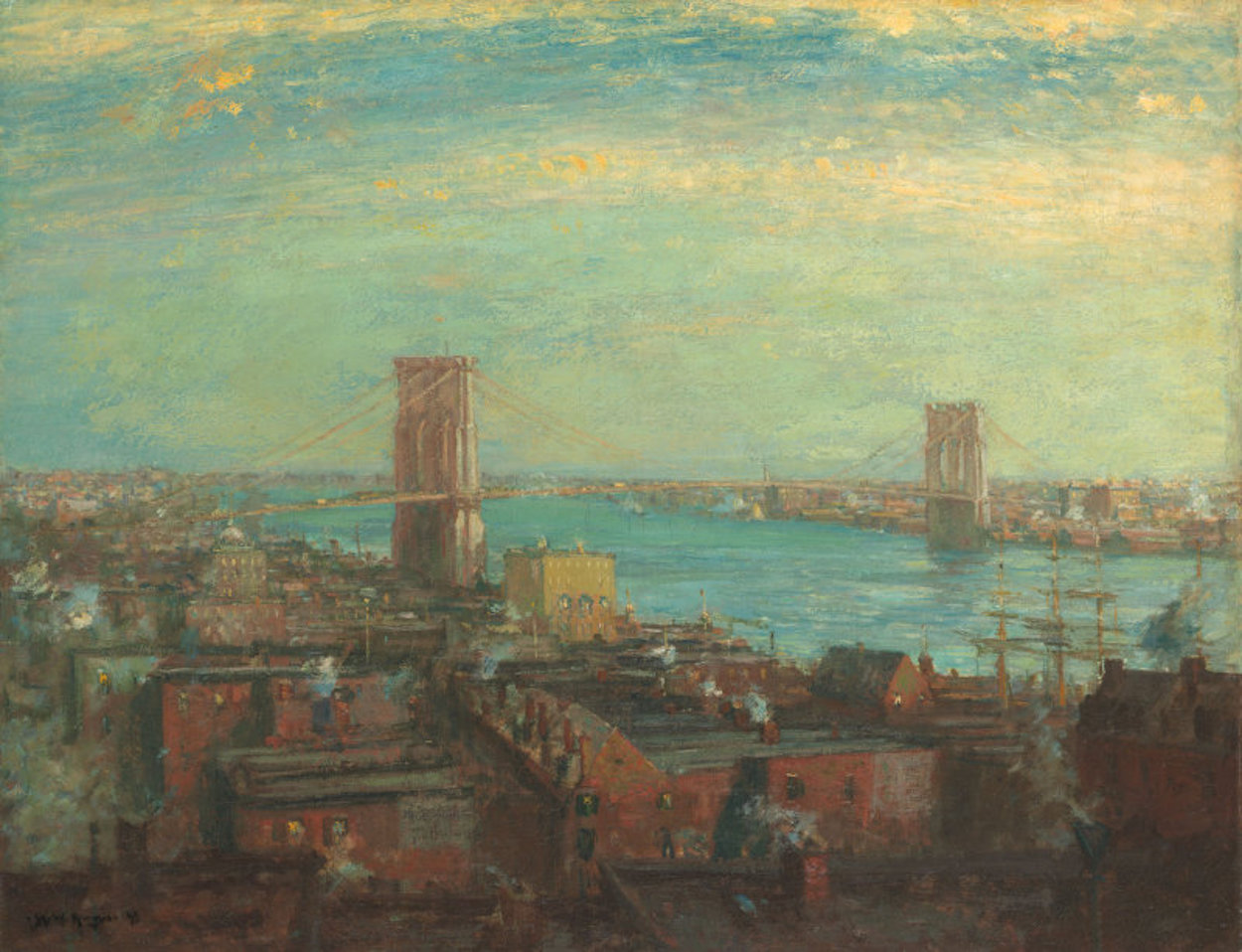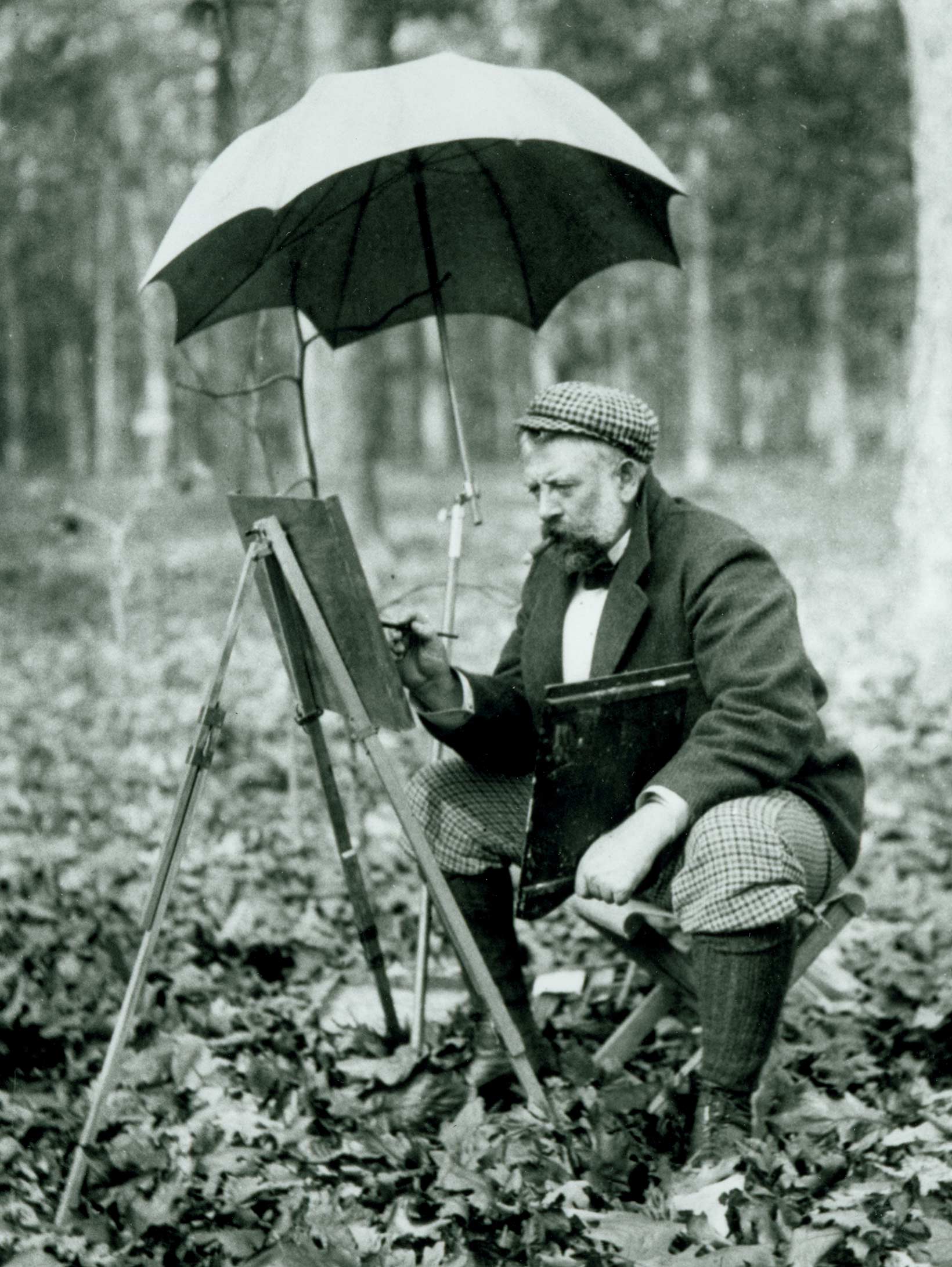Anyone who loves the New York City landscape would view the Brooklyn Bridge as one of its most iconic and stunning landmarks. The bridge, connecting the boroughs of Manhattan and Brooklyn, was built in 1883 and 16 years later became the subject matter for Henry Ward Ranger’s painting Brooklyn Bridge.
Henry Ward Ranger (1858-1916) grew up in western New York where he was encouraged to pursue his artistic talents by supportive parents. After college, he traveled to Paris and then spent time in Holland where he was heavily influenced by The Hague school. It was here that Ranger really developed skill in painting landscapes and perfecting the rich luminosity for which his paintings became known. Ranger was part of the Tonal school of painting where landscapes were painted with overall tone of colored atmosphere or mist in order to bring out the tonal expression of a painting. Ranger and his followers added layers of golden-brown glazes to finish their paintings to create this overall effect.
Brooklyn Bridge (1899) displayed Rangers use of tonalism with its use of color, brushstrokes, and layers of resin that gives the painting a quiet, shimmering effect emphasizing mood and shadow. In this painting the bridge becomes part of the landscape while the sky takes over as the main attraction with its expansive and emotive components coming to life over the hustle and bustle of the urban city below. Ranger settled in New York City and loved to paint landscapes showing the natural energy of his beloved city. He was also the leader of the Old Lyme Artist Colony in Connecticut and was able to paint beautiful landscape paintings of the bucolic surroundings of the Old Lyme countryside, allowing him to paint the best of both urban and suburban worlds.
Ranger was not only a talented landscape painter but also a successful businessman and bequeathed almost $400,000 to what would become the Smithsonian Museum of Art.
Heidi Werber


 Henry Ward Ranger
Henry Ward Ranger